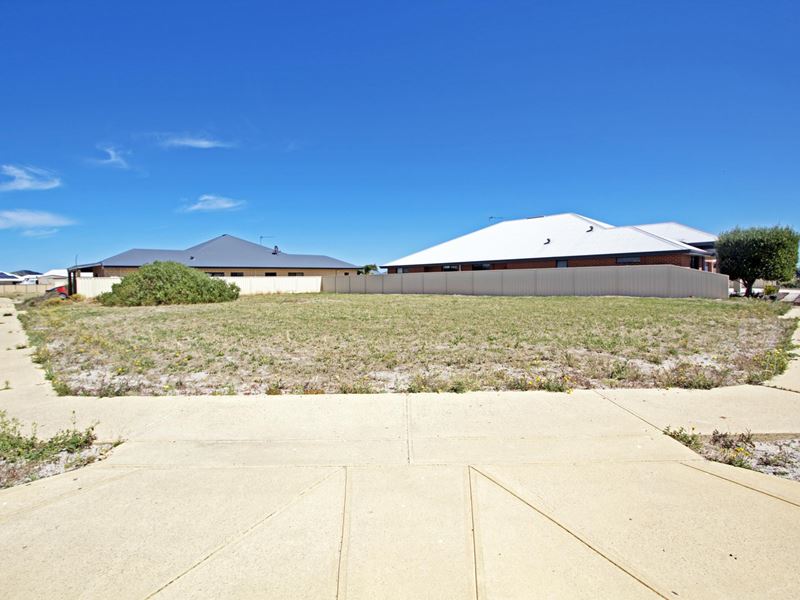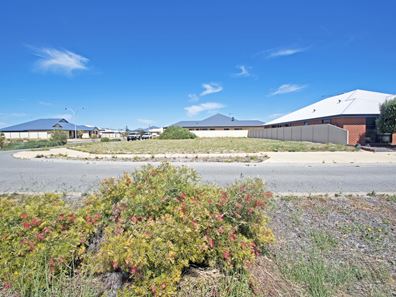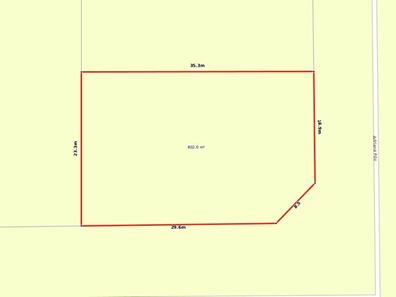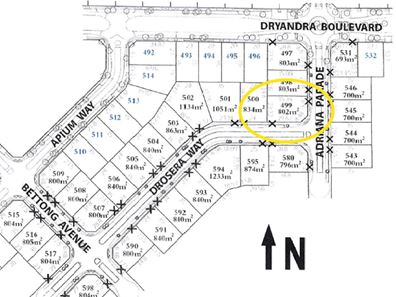SOLD
Can't look past this ripper block, not only in the earlier stages of Beachridge, it's already fully fenced, surrounded by quality homes but most importantly has dual access and is perfectly positioned so your rear outdoor living is protected from the southerly winds.
It's basically ideal in every aspect, so if you're looking to buy a block, here is your checklist…
• 802m2 - larger than normal
• Corner block - gives you dual access
• Fully Fenced - saving you $$
• Surrounded by quality homes
• Located in the earlier Stage 3 development - closer to town centre
• Most important - and this is where you will thank me later. It gets windy in Jurien Bay so this is positioned perfectly so you rear alfresco living is out of the wind.
If you're looking for a ripper block and want more information, call Samantha 0409 104 724 at Ray White Jurien Bay.
Property features
Listing snapshot by reiwa.com
This land listing located in Jurien Bay was sold by Samantha Murdock and Jennifer Walmsley at Ray White Jurien Bay.
If you would like to get in touch with Samantha Murdock or Jennifer Walmsley regarding 499/10 Adriana Parade, Jurien Bay, please call Samantha on 0409 104 724 or call Jennifer on 08 9652 2077, or contact the agent via email.
Cost breakdown
-
Council rates: $1,073 / year
-
Water rates: $553 / year
Nearby schools
Jurien Bay overview
The townsite of Jurien Bay is located on Jurien Bay, 266 kilometres north northwest of Perth. The bay, from which the townsite derives its name was named on July 1st 1801 by the French expedition under Captain Baudin. The name honours Charles Marie, vicomte Jurien, 1763-1836, a French naval administrator. Early maritime history of Jurien Bay includes visits by Captain Philip Parker King in the brig "Bathurst" in 1822, Lt. William Preston in the hired cutter "Colonist" in 1830 and J W Gregory in the schooner "Thetis" in 1847-8. The bay was first surveyed by James Harding, Harbour Master of Fremantle, in 1865, and a more extensive survey was made by Staff Commander W E Archdeacon R.N. in 1875.
The first evidence of interest in development at Jurien Bay was when a reserve for Shipping and Landing was declared here in 1887. A church site reserve for the Church of England was gazetted in 1930, and a church erected in late 1931. The church was demolished by the Army in early 1942 because it was of landmark value (of possible aid to a Japanese landing!).






